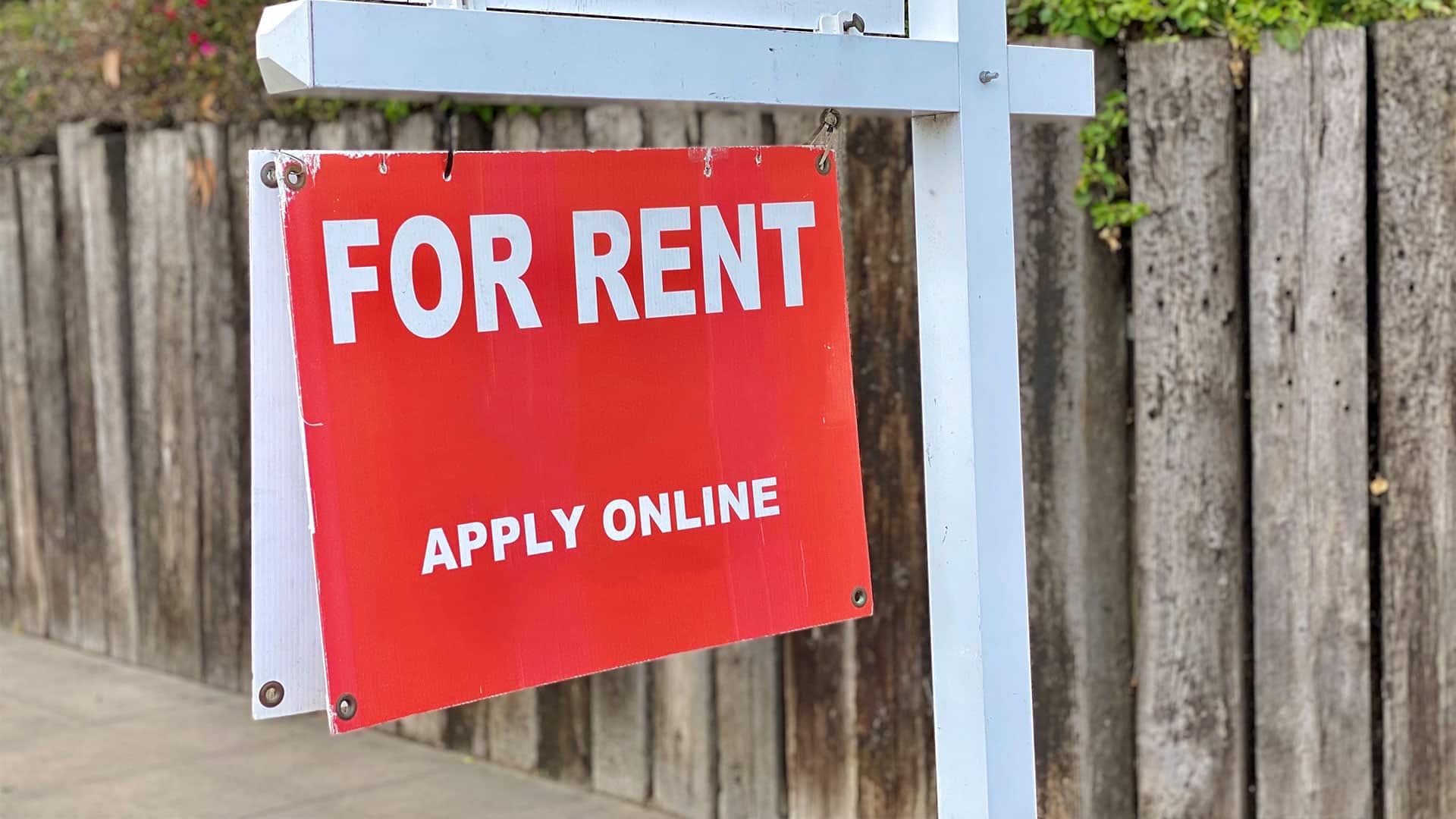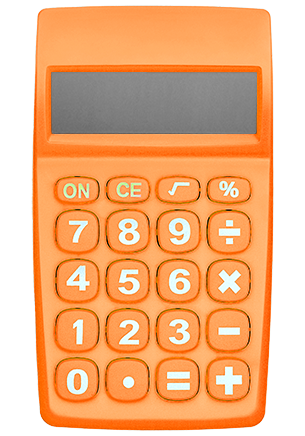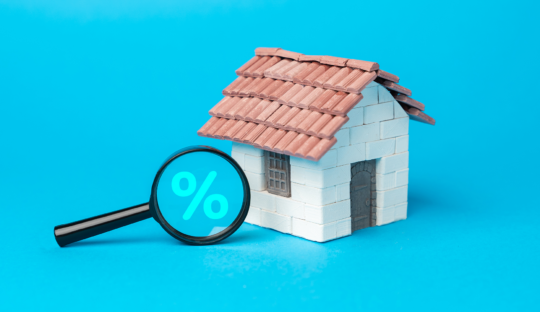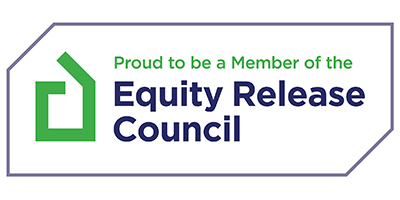In this article
The Financial Conduct Authority does not regulate some types of buy to let or commercial mortgages.
Buy to let mortgages are a popular investment option for those looking to make money through rental properties in the UK.
But what exactly is a buy to let mortgage, and how does it work? In this article, we’ll take a look at the basics of buy to let mortgages, including what they are, how they differ from standard residential mortgages, as well as the factors you need to consider before taking one out.
Whether you’re a seasoned buy to let landlord, buying your first investment property or considering buy to let as a first time buyer, this guide will provide you with a solid understanding of how buy to let mortgages work.
Buy to Let Mortgages
Explained by our mortgage experts
Find more videos like this on MoneymanTV
What is a buy to let mortgage and purchase?
A buy to let property is an investment that cannot be used for personal residence. It generates income through rental payments, which typically cover the mortgage and potentially more.
Buy to let landlords must mortgage the property with the intention of renting it out. You’ll find it pretty common for previously rented properties to have had buy to let mortgages attached to them.
You can learn more about buy to let mortgages in our article & transcript “What is a Buy to Let Mortgage?” or by getting in touch and speaking with an expert buy to let mortgage advisor.
How do buy to let mortgages work?
Buy to let mortgages are designed for individuals who want to purchase a property with the intention of renting it out to tenants. With a buy to let mortgage, the mortgage lender will typically require a larger deposit than a regular residential mortgage, and the interest rates may also be higher.
The amount you can borrow will depend on the rental income the property is expected to generate, as well as your own income and financial circumstances. Mortgage lenders will often require that the expected rental income covers the mortgage payments by a certain amount, typically around 125%.
Buy to let mortgages can be interest only or repayment, meaning you pay back only the interest or both the interest and capital each month. At the end of the mortgage term, you will need to pay back the remaining balance.
It’s important to note that there are some key differences between buy to let mortgages and regular residential mortgages, including the criteria used to assess eligibility and the fees involved. It’s important to work with a mortgage broker who can help you navigate the process and find the best buy to let mortgage for your needs.
You can learn more in our article “How Do Buy to Let Mortgages Work?“
How much can I borrow for a buy to let mortgage?
When applying for a buy to let mortgage, the mortgage lender will assess your expected rental income to determine if you are able to cover your monthly mortgage payments.
As long as the projected income meets the loan amount requested, there are typically no borrowing limits. Whilst this is typically the case, your mortgage lender may also require the projected rental income to exceed the monthly payments by a certain percentage.
Who is eligible for a buy to let mortgage?
In the UK, to be eligible for a buy to let mortgage, you must be over 18 years old and a UK resident. You should have a good credit history and a steady income to support the monthly mortgage payments.
The mortgage lender will assess your ability to afford the mortgage, taking into account the rental income you are likely to receive from the property.
The majority of mortgage lenders will require a minimum deposit of 25% of the property’s value, although some may accept a lower deposit depending on your individual circumstances.
It’s worth noting that eligibility criteria can vary between mortgage lenders, so it’s important to do your research and seek expert mortgage advice from a qualified mortgage broker to find the best deal for you.
What documents are needed for buy to let mortgages?
When applying for a buy to let mortgage, you must provide a range of documents to the mortgage lender, including proof of income, deposit, ID, address, bonuses, commission, and P60.
Self-employed individuals must also provide SA302 tax returns, and existing buy to let landlords must provide rental income proof, usually in the form of an ARLA-regulated report and mortgage statement for their current properties.
Being prepared with these documents can help the application process to move significantly quicker. Because of this, it’s recommended to have them readily available before making a start on the buy to let mortgage process.
What type of buy to let mortgages could I apply for?
Most buy to let investors typically opt for an interest only mortgage to reduce their monthly expenses.
With this type of mortgage, you only pay the interest every month, and the remaining capital balance is paid off by selling the property or remortgaging onto a repayment mortgage at the end of the term. Alternatively, you may have a repayment vehicle set up to cover the cost.
Although interest only mortgages are the norm and considered more tax-efficient, you can still apply for repayment mortgages on buy to let properties, where you’ll pay both capital and interest every month.
While this may result in higher monthly payments, it helps you build equity in the property and ultimately own it outright at the end of the term, without having to make any significant capital payments.
How can I find the best buy to let mortgage deals?
There are a few ways to find the best buy to let mortgage deals in the UK. Here are some tips to help you:
- Use a mortgage broker: A mortgage broker can help you find the best deals by searching the market for you. They can also offer advice on which mortgage product is right for you and help you with the application process.
- Research online: There are many comparison websites that allow you to compare buy to let mortgage deals from different mortgage lenders. This can be a useful starting point to get an idea of what is available.
- Check with your existing lender: If you already have a mortgage with a mortgage lender, it may be worth checking if they offer buy to let mortgages.
- Consider the fees: When comparing mortgage deals, it’s important to take into account any fees that may be charged, such as arrangement fees, valuation fees and legal fees. These can significantly increase the overall cost of the mortgage.
Remember, finding the best buy to let mortgage deals is not just about finding the lowest interest rate. You also need to consider the overall cost, the fees, and the terms and conditions of the mortgage.
What is the difference between let to buy mortgages and buy to let mortgages?
A let to buy mortgage is a type of buy to let mortgage where the landlord rents out the property to generate income.
The difference between the two is that let to buy mortgages are typically used by “accidental” landlords who did not initially plan to rent out their property but later changed their minds.
Rather than going through the hassle of selling their home and purchasing a buy to let property, homeowners may choose to rent out their existing property and use the income to pay off their new residential mortgage.
This allows them to generate additional income without purchasing a new property specifically for the purpose of renting it out.
The Positives and Negatives of a Let to Buy Mortgage
A let to buy mortgage can be a less stressful option than selling your current home and purchasing
a new one, while also providing additional income to cover its own mortgage and generate extra profit for you to enjoy as you see fit.
That said, being responsible for two properties, one of which is occupied by tenants or a family, in itself can be quite stressful for you as a property owner, especially when you factor in likely also working full-time in addition to this.
Let to buy mortgages may also have higher interest rates and fewer available mortgage lenders compared to residential mortgages, although they may have more competitive rates and fees than buy to let mortgages, which can a big benefit for you.
The value of the properties is also something that you will have to give some thought to, as any increase in value could result in increased gains, though conversely to this, a decrease in value could lead to potential losses.
Take a look at our article “What is a Let to Buy Mortgage?” to learn more.
What is consent to let and could that be an option for me?
If you own a residential property but need to move out for a short period of time, you may be able to take advantage of a feature known as consent to let. Essentially, this allows you to temporarily rent out your property without converting it into a permanent buy to let.
It’s important to note that not all mortgage lenders offer consent to let, and those that do may have varying limits on the number of days per year that you can rent out your property. Typically, this ranges from 30 to 90 days in a calendar year, depending on the mortgage lender.
If you think you might need to use consent to let, the first step is to check with your mortgage lender to see if this option is available to you.
Keep in mind that this should only be used as a short-term solution, as renting out your property for longer periods of time without converting to a buy to let mortgage is generally not allowed and may result in penalties or legal action.
What should I think about before choosing a buy to let mortgage?
When considering a buy to let mortgage, it’s important to think about a few key factors before making a decision.
Firstly, it’s important to think about the purpose of the property. Will it be a short-term investment, or a long-term investment that you plan to hold onto for several years? This can affect the type of mortgage you choose.
You’ll also want to think about the size of the deposit you can afford to put down, as this will affect the interest rate you’ll receive and the overall cost of the mortgage.
Consider the interest rate and the type of rate you want. Fixed rates provide stability, but variable rates may offer flexibility if you want to pay off the mortgage early.
Additionally, you should think about the fees associated with the mortgage, including arrangement fees and valuation fees, as these can add to the overall cost of the mortgage.
Finally, it’s important to choose a mortgage that suits your individual financial situation and future plans, and to seek advice from a qualified mortgage advisor if you’re unsure about any aspect of the process.
How many buy to let mortgages can I have?
Unlike residential mortgages, which typically only allow you to have one mortgage at a time, buy to let mortgages are more flexible and make it easier for investors to own multiple properties.
It’s common for a buy to let landlord to have several properties to their name, either individually or under a limited company.
While there may be some variation among mortgage lenders, generally there is no strict limit on the number of buy to let mortgages you can have. As with any mortgage application, however, the mortgage lender will still need to assess whether you can afford to take on additional debt.
Many buy to let lenders require you to provide evidence of rental income and may use this to determine your affordability, along with your personal income and other financial commitments.
One advantage of having multiple buy to let properties is that they can provide a more diverse source of additional income, which may prove to be more beneficial and stable than generating income from only a single property.
That being said, it’s important to note that having more than one property can also come with added responsibilities and risks, such as the fact that you will be managing multiple tenancies, maintaining the upkeep of different properties, and deal with periods of possibly generating no rental income.
When applying for a new buy to let mortgage, the location of the property you want to purchase can also impact your eligibility.
For example, a mortgage lender may be less willing to lend on a street where you already own a property, as this could increase their exposure to risk if property values in that area were to drop.
Similarly, a mortgage lender may not be willing to lend on a property that is in an area where they already have a high number of mortgages, as this could also increase their overall risk exposure.
Can I live in my buy to let property?
Living in a property that is currently under a buy to let mortgage is not allowed and considered a violation of the contract. Doing this may lead to penalties and possibly even legal action.
That being said, if you no longer have a tenant in your buy to let property and you wish to convert it into a residential property to live in, it may be worth taking out a remortgage to achieve this.
We would highly recommend that you speak with a qualified buy to let remortgage specialist to learn more about this option and the potential implications involved.
Can I change my residential mortgage to a buy to let mortgage?
To switch from a residential mortgage to a buy to let mortgage, you would need to contact your mortgage lender and discuss your options with them.
Some mortgage lenders may allow you to switch your mortgage over without needing to remortgage or remortgage to release equity, while others may require you to apply for a new mortgage.
It’s important to note that when you switch to a buy to let mortgage, your mortgage lender may require you to meet certain criteria, such as having a minimum income or a certain amount of equity within your property.
They will also likely assess the rental income potential of the property to ensure that it is a viable investment option for you.
Additionally, it’s important to consider the tax implications of becoming a landlord, as there are different tax rules and regulations for rental income compared to personal income. It may be worth speaking to a tax advisor or financial expert to understand how this will affect your financial situation.
Overall, while changing from a residential mortgage to a buy to let mortgage can provide a source of additional income, it’s important to carefully consider the financial implications and ensure that it is the right decision for your personal circumstances.
To learn more about this topic, take a look at our article “Can I change my mortgage to a buy to let?“
How to change your mortgage to buy to let?
If you are considering changing your residential mortgage to a buy to let mortgage, it is essential to get in touch with your current mortgage lender to determine if this is something they would allow you to do.
The next step if this is something that your mortgage lender approves of, would be to find a reputable mortgage broker, who can help guide you through the process.
When you change your mortgage type from a residential mortgage to a buy to let mortgage, you will be required to remortgage your property in order to do this.
Whether you decide to stay with your current mortgage lender or switch to a new one, an experienced mortgage advisor can assist you in finding an affordable and suitable mortgage deal.
It is important to bear in mind that the terms of your mortgage will change as a result of the conversion. Therefore, it is important to meet the eligibility criteria set by the mortgage lender, which is typically more strict for buy to let mortgages compared to residential mortgages.
A mortgage broker can help you in navigating this process, ensuring that you meet the requirements and securing the best mortgage deal for your circumstances.
Can I remortgage a buy to let?
When you remortgage a buy to let property, you are essentially taking out a new mortgage on the property, typically with a different lender, in order to access better terms, as a means of putting down a deposit on any further properties. This can also be achieved with a remortgage to release equity.
As with any mortgage, your eligibility will be determined by your mortgage lender, and will depend on a number of factors including your credit history, income, and the value of your property.
If you are considering taking out a buy to let remortgage on a property, it’s important to do your research and shop around for the best deals.
A mortgage broker can be a useful resource in this process, as they will be able to compare rates and terms from a wide range of lenders and help you find the best option for your needs.
If a landlord wants to switch from an interest-only mortgage to a repayment mortgage, they may be able to do so by remortgaging their buy to let property. This will result in higher monthly mortgage payments, but will allow them to pay off both the capital and interest together.
It’s important to have a conversation with a qualified mortgage lender to explore the different remortgage options available to you.
To learn more, feel free to take a look at our article “Can you remortgage a buy to let property?“.
Speak to an Advisor – It’s Free!
Schedule a free callback from one of our experts today.
- All situations considered
- Transparent and honest mortgage advice
- We search 1000s of purchase and remortgage deals
Our customers rate us 4.9/5
If I am a first time buyer, can I get a buy to let mortgage?
As a first time buyer, it is possible to obtain a buy to let mortgage, although your options may be limited. Keep in mind that you will likely need a larger deposit in order to borrow the amount you need.
That being said, you will lose the first time buyer benefits, such as stamp duty exemption, since you will not be living in the property and buy to let landlords generally have to pay some level of stamp duty on their properties.
For some who look at first time buyer buy to let, becoming a landlord can be a good way to supplement their income before being able to afford their own residential mortgage.
It’s important to note that in this circumstance, the mortgage lender will assess you on your second purchase, knowing that you already have a mortgage in your name. This may affect your affordability or limit the amount you can borrow.
It is recommended to consult with a mortgage broker who specialises in buy to let mortgages for first time buyers to explore your options.
What happens if I have no rent coming in from my buy to let property?
If you have no rent coming in from your buy to let property, you will still be responsible for paying the mortgage and any other associated costs, such as maintenance and insurance. It’s important to have a plan in place to cover these costs.
You may also want to consider speaking with your mortgage lender to discuss any potential options, such as a payment holiday, although it’s important to note that an option like this may have financial implications.
Additionally, if you’re struggling to find tenants, it may be worth speaking with a letting agent or property management company for further advice and support.
Are there any additional costs included with a buy to let?
Like any mortgage, a buy to let mortgage comes with standard costs that you would expect, such as putting down a deposit, paying mortgage arrangement, application and broker fees, and making monthly payments.
In addition to these, there may be additional fees that you will have to pay, such as valuation fees, product fees, mortgage exit fees, solicitors fees, disbursement fees, and stamp duty.
Your mortgage lender will be able to advise you on potential stamp duty rates, and if you decide to leave your buy to let early, there may be an early repayment charge (ERC) that can be quite costly.
Furthermore, beyond the mortgage process, you will also need to consider ongoing costs such as landlord insurance, letting agent fees, income tax, and general property maintenance.
As a landlord, you may have tenants that require maintenance from time to time, which can be either cheap or costly depending on the work that needs to be done and the contractors you work with.
All of these costs will vary depending on your personal and financial circumstances, and your mortgage advisor can help you understand the costs associated with your buy to let mortgage.
Can I get a buy to let mortgage on benefits?
Before submitting any mortgage applications, your assigned mortgage advisor will assess your eligibility for a mortgage by reviewing your case. It’s possible that you may not qualify for certain mortgage types, but your mortgage advisor will inform you of this.
Some mortgage lenders may not have a minimum income requirement for buy to let purchases, which means that it may be possible to obtain a buy to let mortgage while on benefits. Please keep in mind though, that your options may be restricted and the lending criteria may be more strict.
Can I get a buy to let mortgage on Universal Credit?
Since 2013, various benefits have been merged to form Universal Credit, which some mortgage lenders will consider, including Child Tax Credit. Even if you receive benefits, you cannot be denied a mortgage on that basis alone.
It’s important to note, however, that receiving benefits does not guarantee affordability, and a large deposit of around 20% could help in this regard.
To assess your eligibility, it is recommended that you get in touch with a qualified buy to let mortgage advisor.
What type of benefits count as income when applying for a buy to let mortgage?
Surprisingly, there are many options for applicants on benefits, including various benefit types that can be considered by mortgage lenders, however, not all mortgage lenders will accept every type of benefit.
Some of the benefits that may be accepted include;
- Universal Credit
- Child Tax Credit (now comes under Universal Credit)
- Child Benefit
- Disability Living Allowance (DLA)
- Severe Disablement Allowance
- Incapacity Benefit (IB)
- Industrial Injuries Benefit (IIB)
- Carers Allowance
- Maternity Allowance
- Attendance Allowance
- Pension Credit
- Widow’s Pension
It’s important to note that meeting the criteria for benefits does not guarantee mortgage approval, as affordability and other requirements must also be met. As an experienced mortgage broker, we check mortgage lender criteria to make sure it is right for you.
Are there any alternatives to buy to let mortgages?
Moving into a rental property or temporary accommodation can be a good option for those who are struggling to secure a let to buy mortgage or who do not meet the criteria for a buy to let mortgage.
That , it’s important to keep in mind that this can be quite expensive, as you’ll need to pay rent in addition to any mortgage payments you may still be making on your existing property.
If you do decide to go down the route of a buy to let mortgage, it’s important to note that not all lenders will accept this type of application, and you’ll need to meet their specific criteria.
This may include factors such as your credit score, your level of income, and the value of the property you’re looking to purchase.
Another option is to apply for a consent to let, which is where your existing mortgage lender allows you to rent out your residential property for a period of time.
This can give you the breathing room you need to move into your new home, but it’s worth noting that this will depend on your lender’s policies and may make it more difficult to secure a new mortgage on a new property.
If none of these options seem practical, selling your existing property and moving into rental accommodation could be a good alternative.
While this may require a bit of extra effort and be quite costly, it can be a good way to break the cycle of renting and get yourself in a better position for your next mortgage. Plus, you’ll be free from any property chains and can take your time finding the perfect new home.








